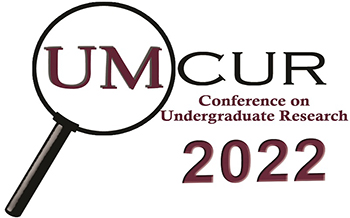To what extent does zooplankton richness and composition differ between natural and restored pond ecosystems in the Missoula Valley.
Project Type
Presentation
Faculty Mentor’s Full Name
Lisa Eby
Faculty Mentor’s Department
Ecosystem and Conservation Sciences
Abstract / Artist's Statement
Zooplankton are microscopic organisms that are key components of aquatic ecosystems around the world. They represent an integral part of the food web and help transfer key nutrients such as carbon, nitrogen, and phosphorous from primary producers like phytoplankton to the invertebrates and fish that prey upon them. The diversity and composition of these organisms serves as a biological indicator of favorable conditions in aquatic environments and reflects ecosystem functioning or how much degradation has occurred. Understanding the zooplankton assemblage is a vital tool for restoration practitioners working in aquatic landscapes. Even though zooplankton are key components of aquatic food webs, they are often overlooked in restoration assessments. I will be comparing the zooplankton communities between the newly restored Missoula County Ponds and a natural reference pond in Lolo National Forest. I will use a 500-micron zooplankton net to sample each site once a month throughout May, June, and July of 2022. Learning how zooplankton richness and composition differ between formerly degraded sites and reference sites has the potential to enhance aquatic restoration implementation and recovery goals. This also presents an opportunity for practitioners and the public to become more informed on the importance of the microorganism assemblage in the broader food web and community recovery of aquatic ecosystems.
Category
Life Sciences
To what extent does zooplankton richness and composition differ between natural and restored pond ecosystems in the Missoula Valley.
UC 331
Zooplankton are microscopic organisms that are key components of aquatic ecosystems around the world. They represent an integral part of the food web and help transfer key nutrients such as carbon, nitrogen, and phosphorous from primary producers like phytoplankton to the invertebrates and fish that prey upon them. The diversity and composition of these organisms serves as a biological indicator of favorable conditions in aquatic environments and reflects ecosystem functioning or how much degradation has occurred. Understanding the zooplankton assemblage is a vital tool for restoration practitioners working in aquatic landscapes. Even though zooplankton are key components of aquatic food webs, they are often overlooked in restoration assessments. I will be comparing the zooplankton communities between the newly restored Missoula County Ponds and a natural reference pond in Lolo National Forest. I will use a 500-micron zooplankton net to sample each site once a month throughout May, June, and July of 2022. Learning how zooplankton richness and composition differ between formerly degraded sites and reference sites has the potential to enhance aquatic restoration implementation and recovery goals. This also presents an opportunity for practitioners and the public to become more informed on the importance of the microorganism assemblage in the broader food web and community recovery of aquatic ecosystems.
